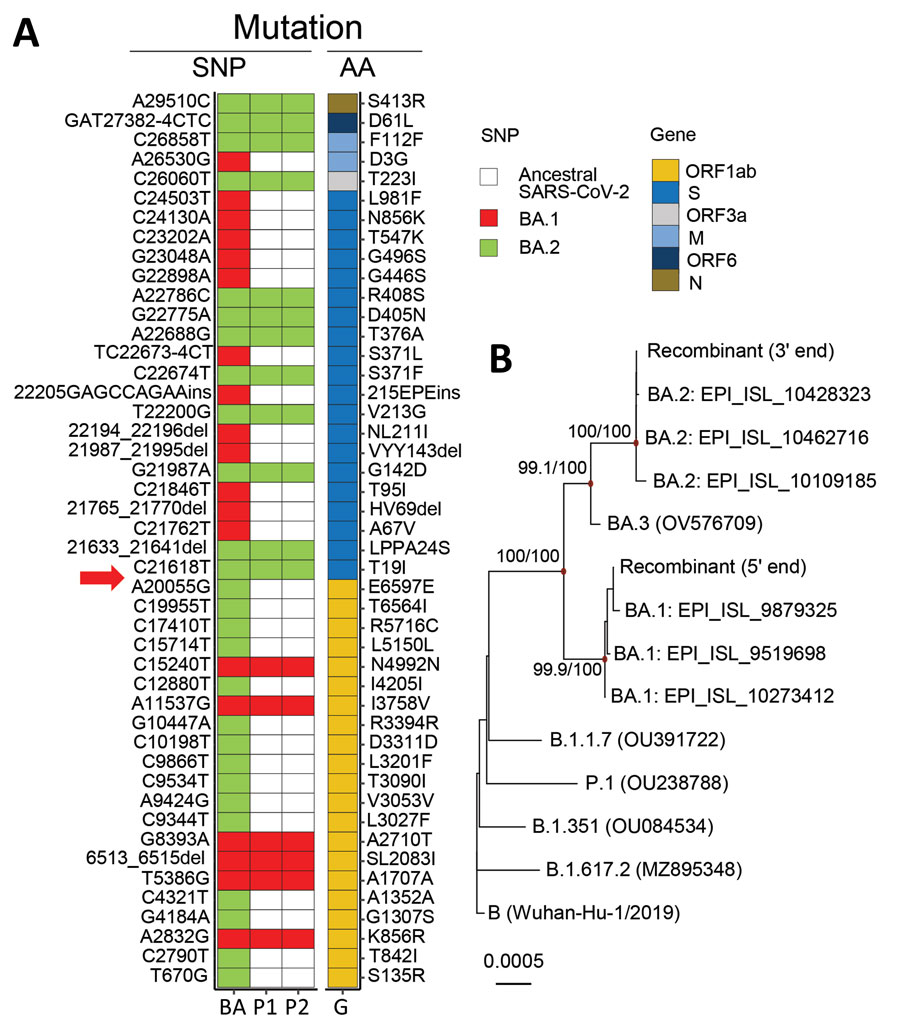Volume 28, Number 6—June 2022
Research Letter
Recombinant BA.1/BA.2 SARS-CoV-2 Virus in Arriving Travelers, Hong Kong, February 2022
Figure

Figure. Detection of recombinant BA.1/BA.2 SARS-CoV-2 virus in arriving travelers, Hong Kong, China, February 2022. A) Mapping of BA.1- and BA.2-specific SNPs against the reference sequence genome (Genbank accession no. MN908947.3). Red boxes indicate BA.1-specific SNPs and green boxes indicate BA.2-specific SNPs found in samples from P1 and P2; the corresponding AA changes of these SNPs also are indicated. Red arrow indicates the putative breaking point. B) Phylogeny of viral RNA sequences at the 5′ and 3′ ends to the putative breakpoint. The maximum-likelihood tree was generated by using IQ-TREE (http://www.iqtree.org) and the transition plus empirical base frequencies plus proportion of invariable site nucleotide substitution model with Wuhan-Hu-1 (GenBank accession no. MN908947.3) as the outgroup. References sequences are shown with GISAID (https://www.gisaid.org) or GenBank accession numbers. Red node points show strongly supported branches as detected by SH-aLRT and ultrafast bootstrap values. Scale bar indicates nucleotide substitutions per site. AA, amino acid; BA, BA.1/BA.2 recombinant; G, gene; M, membrane; N, nucleocapsid; ORF, open reading frame; P1, patient 1; P2, patient 2; S, spike; SNP, single-nucleotide polymorphism.